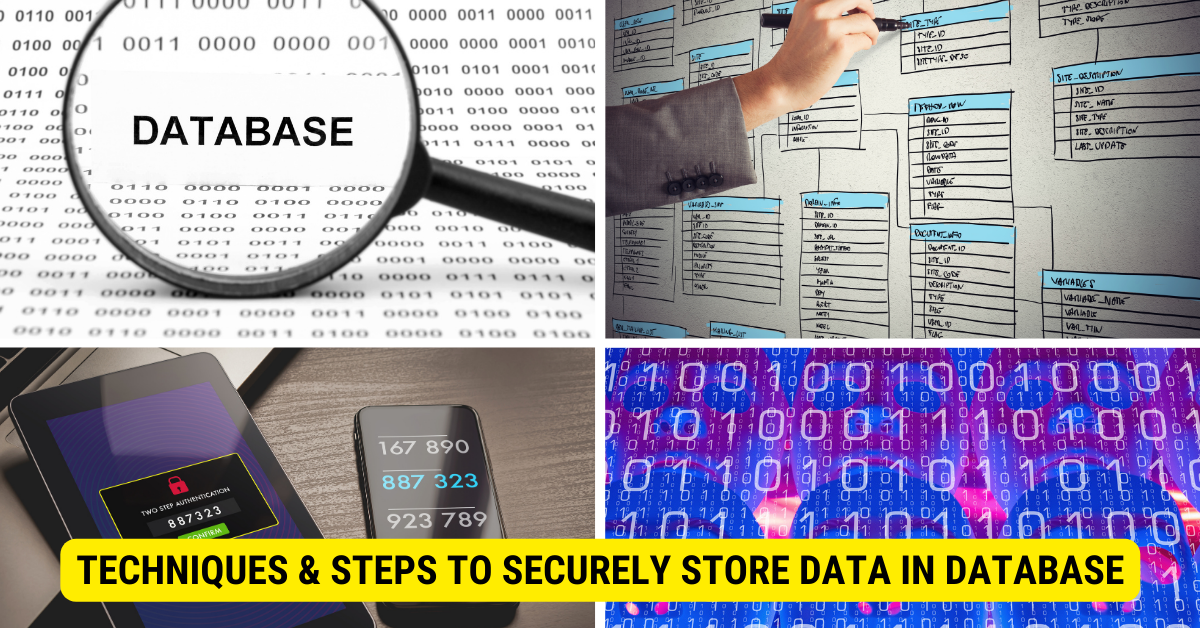Securing data in a database involves several steps: implementing robust authentication and authorization measures, utilizing encryption for sensitive data, conducting regular audits, having a backup and recovery plan, using modern security technologies like data masking and intrusion detection systems, and ensuring compliance with legal and regulatory standards. It is equally important for small businesses to follow best practices like using secure cloud services and keeping software up-to-date.
Understanding Data Security
Importance of Data Security
Data security is safeguarding data against unauthorized access, corruption, or theft. Data is an invaluable asset in today’s digital landscape, and its security is paramount for businesses and individuals.
Types of Data Threats

Data threats can come in many forms, such as hacking, malware, insider threats, and human errors. Awareness of these threats is the first step in implementing effective security measures.
Database Security Essentials
Authentication & Authorization
Authentication and authorization ensure that only authorized users can access the data. Strong passwords, two-factor authentication, and proper role-based access control can significantly enhance data security.
Encryption & Decryption
Encryption transforms data into a code to prevent unauthorized access. Proper encryption and decryption methods should be used to protect sensitive information within the database.
Regular Auditing
Regular auditing of database activities helps in tracking suspicious activities and can provide early warning signs of potential breaches.
Backup & Recovery Plans
Having a solid backup and recovery plan is essential to safeguard data from loss due to accidental deletion, corruption, or malicious attacks.
Techniques & Steps To Securely Store Data In Database

Securing data in a database is crucial for the protection of sensitive information. Here are some ways to securely store data in a database:
1. Data Encryption
Data encryption translates data into another form, or code, so that only people with access to a secret key or password can read it.
- Step 1: Choose an encryption method. Advanced Encryption Standard (AES) is commonly used.
- Step 2: Encrypt your data before storing it in the database. For example, in Python you could use the PyCryptodome library:from Crypto.Cipher import AES
key = ‘This is a key123’ # must be 16, 24 or 32 bytes
cipher = AES.new(key, AES.MODE_ECB)
encrypted_text = cipher.encrypt(‘Your secret data’)
- Step 3: Decrypt your data when you read it from the database.
python
Copy code
cipher = AES.new(key, AES.MODE_ECB)
decrypted_text = cipher.decrypt(encrypted_text)
2. Password Hashing
When storing passwords, hashing algorithms are used to ensure that even if someone gains access to the database, they can’t read the passwords.
- Step 1: Choose a secure hashing algorithm such as bcrypt, scrypt or Argon2.
- Step 2: Hash the password before storing it in the database. For example, in Python you could use the bcrypt library:
import bcrypt
password = “user password”.encode(‘utf-8’)
hashed = bcrypt.hashpw(password, bcrypt.gensalt())
- Step 3: When a user logs in, hash the password they enter and compare it to the hashed password in your database:if bcrypt.checkpw(password, hashed):
print(“Password is correct”)
else:
print(“Password is incorrect”)
3. Data Masking
Data masking is a method where you replace existing sensitive information in your database with information that is useful for purposes such as testing and training, but safe for exposure.
- Step 1: Identify the sensitive data in your database that you want to mask.
- Step 2: Choose a data masking technique such as substitution, shuffling, or encryption.
- Step 3: Apply the data masking technique to your data before using it for non-production purposes.
4. User Access Controls
Control who has access to the information in your database by implementing user access controls.
- Step 1: Identify different levels of access to your database (like read, write, and admin).
- Step 2: Assign each user a role that gives them the level of access they need to perform their job and nothing more.
- Step 3: Implement user authentication to ensure that only users with the appropriate role can access the data.
5. Regular Backups and Updates:
Keeping your database software up to date and regularly backing up your data are good practices to prevent data loss and protect against vulnerabilities.
- Step 1: Set a schedule for regular database software updates.
- Step 2: Set a schedule for regular backups of your data.
- Step 3: Store backups in a secure, off-site location.
Remember, data security is a complex field, and the appropriate measures will depend on the specific requirements and constraints of your project. You may need to consult with a data security expert to ensure that your data is adequately protected.
6. Firewalls & Intrusion Detection Systems
Firewalls and intrusion detection systems provide a robust defense against external threats, closely monitoring and controlling incoming and outgoing traffic based on predetermined security rules.
7. Legal & Regulatory Compliance
Compliance with legal and regulatory standards, such as GDPR, HIPAA, and PCI DSS, is essential for data security. It ensures that data handling practices are aligned with legal requirements, thus minimizing legal risks.
Best Practices for Small Businesses
Small businesses may not have the resources for advanced security measures, but they can still implement effective strategies. Utilizing cloud services with strong security protocols, educating employees about security best practices, and regularly updating software can go a long way in securing data.
Key Takeaways
- Importance of Data Security: Data is an invaluable asset and needs to be protected against unauthorized access, corruption, or theft.
- Security Measures: Implementing authentication, authorization, encryption, regular auditing, and backup & recovery plans are crucial for data security.
- Modern Security Technologies: Data masking, firewalls, and intrusion detection systems can significantly enhance database security.
- Legal Compliance: Compliance with legal and regulatory standards like GDPR, HIPAA, and PCI DSS is important to minimize legal risks.
- Small Business Practices: Even without resources for advanced security measures, small businesses can implement effective strategies like utilizing cloud services with strong security protocols, employee education, and regular software updates.
Frequently Asked Questions
What are the main risks to database security?

The main risks include unauthorized access, malware attacks, human errors, and insider threats.
How can I secure my small business’s database?
Small businesses can utilize strong authentication methods, encryption, cloud services with robust security, and regular software updates.
Is data encryption enough for database security?
While encryption is essential, it is just one aspect of a comprehensive security strategy.
Why is regular auditing important in database security?
Regular auditing helps in monitoring activities and detecting suspicious behavior early on, enhancing security.
What are some modern security technologies for databases?
Modern technologies include data masking, intrusion detection systems, firewalls, and more.
Conclusion
Securing data in a database is a multifaceted task that requires a comprehensive approach. From authentication and encryption to legal compliance and education, every aspect plays a vital role in safeguarding data. The key is to understand the specific needs and potential threats and then apply the most effective strategies accordingly.
